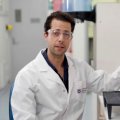Physicists at The University of Queensland and the Australian National University (ANU) have demonstrated a software-based quantum amplifier which has the potential to expand the use of ultra-secure quantum cryptographic communications.
The development could lead to new ways to guarantee security of everyday communications, including financial transactions and email.
ANU Research School of Physics and Engineering PhD student Helen Chrzanowski said this had the potential to guarantee security for any kind of information you want to transmit, from particularly sensitive information, like banking data or electoral results, to personal emails.
Quantum cryptography exploits quantum mechanics to guarantee 100 per cent security between a sender and receiver of information.
Most forms of quantum communication also use a phenomenon known as quantum entanglement, which Albert Einstein described as “spooky action at a distance”.
Although powerful, this phenomenon is fragile and is often destroyed before it can be transmitted over large distances.
The usual approach to combating loss - an amplifier – such as those used for radio or television signals, only makes the situation worse.
Researchers, led by Professor Ping Koy Lam at the ANU Research School of Physics and Engineering, have used a sophisticated scheme to work out when an amplified signal works or fails.
They have developed an algorithm which allows them to verify whether a quantum entanglement signal has been successfully received.
The software allows the physicists to filter out unwanted signal failures.
It is now possible to use an amplifier to distribute the signals over greater distances, and for the sender and receiver to know if the signal has arrived safely.
Professor Lam said the results showed clear success in resurrecting the quantum effect that so perturbed Einstein.
UQ’s Professor Timothy Ralph said the results would help harness the power of quantum entanglement in communications.
“If we want to use entanglement over larger distances, and harness its power for telecommunication, we need quantum amplifiers that allow us to resurrect quantum entanglement in a communication line,” he said.
The results have been published in the latest on-line issue of Nature Photonics.
Media: UQ Professor Timothy Ralph, +61 7 3346 9693 or ralph@physics.uq.edu.au. ANU Research School of Physics and Engineering Professor Ping Koy Lam, +61 2 6125 8378 or ping.lam@anu.edu.au. ANU PhD Student Helen Chrzanowski 0432 267 970 or helen.chrzanowski@anu.edu.au.
.jpg)











